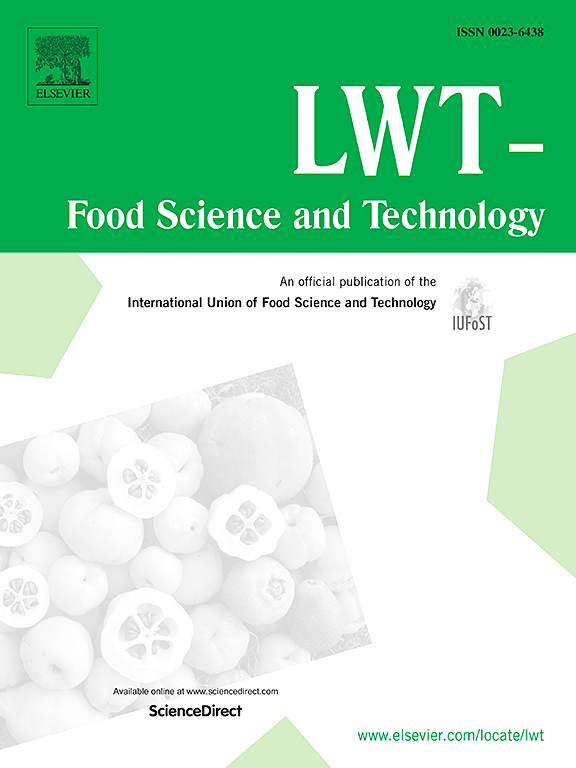Physicochemical characterization of thermally oxidized rapeseed oil: An insight into combining acoustic diagnostic technique and chemometrics
IF 6
1区 农林科学
Q1 FOOD SCIENCE & TECHNOLOGY
引用次数: 0
Abstract
This study aimed to apply an ultrasonic pulse-echo system to characterize thermally oxidized rapeseed oil. After 60 h of heating treatment (165 ± 5 °C), the physicochemical (density, viscosity, acid value, iodine value and polar compounds) and acoustic properties (velocity, acoustic impedance, maximum amplitude of the first echo, difference in amplitude, and area under the curve) of rapeseed oil were measured. Support vector machine, random forest (RF), and backpropagation neural network algorithms were used to establish quantitative prediction models for viscosity and polar compounds based on the acoustic properties of rapeseed oil. The results indicated significant correlations between acoustic impedance and viscosity (R = 0.70), as well as between acoustic impedance and polar compounds (R = 0.79). Heating treatment reduced oil unsaturation and led to the formation of oxidative and polymeric compounds, which in turn increased the velocity and impedance, while decreasing the other three acoustic features. The RF model yielded the best performance in predicting viscosity (R2 = 0.7944) and polar compounds (R2 = 0.8385). These findings highlight that ultrasonic technology not only accurately predicts key quality parameters, but also provides a rapid, non-destructive, and cost-effective alternative to traditional methods for characterizing thermally oxidized rapeseed oil.
热氧化菜籽油的物理化学特征:声学诊断技术与化学计量学相结合的启示
本研究旨在应用超声脉冲回波系统表征热氧化菜籽油。经过 60 小时的加热处理(165 ± 5 °C)后,测量了菜籽油的理化性质(密度、粘度、酸值、碘值和极性化合物)和声学性质(速度、声阻抗、第一次回波的最大振幅、振幅差和曲线下面积)。根据菜籽油的声学特性,采用支持向量机、随机森林(RF)和反向传播神经网络算法建立了粘度和极性化合物的定量预测模型。结果表明,声阻抗与粘度(R = 0.70)以及声阻抗与极性化合物(R = 0.79)之间存在明显的相关性。加热处理降低了油的不饱和度,导致氧化和聚合化合物的形成,进而提高了速度和阻抗,同时降低了其他三个声学特征。射频模型在预测粘度(R2 = 0.7944)和极性化合物(R2 = 0.8385)方面表现最佳。这些研究结果突出表明,超声波技术不仅能准确预测关键质量参数,还能快速、无损、经济地替代传统方法来表征热氧化菜籽油。
本文章由计算机程序翻译,如有差异,请以英文原文为准。
求助全文
约1分钟内获得全文
求助全文
来源期刊

LWT - Food Science and Technology
工程技术-食品科技
CiteScore
11.80
自引率
6.70%
发文量
1724
审稿时长
65 days
期刊介绍:
LWT - Food Science and Technology is an international journal that publishes innovative papers in the fields of food chemistry, biochemistry, microbiology, technology and nutrition. The work described should be innovative either in the approach or in the methods used. The significance of the results either for the science community or for the food industry must also be specified. Contributions written in English are welcomed in the form of review articles, short reviews, research papers, and research notes. Papers featuring animal trials and cell cultures are outside the scope of the journal and will not be considered for publication.
 求助内容:
求助内容: 应助结果提醒方式:
应助结果提醒方式:


